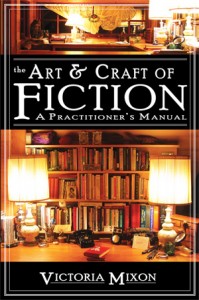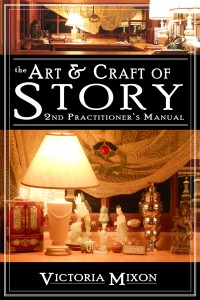I was looking all over for my post on Showing Vs Telling last November, and I finally found that darn thing.
In it, I explain the differences in the quality of fiction by way of the metaphor of a barrel (or a keg, if you will—my husband just recently became a homebrewer) from lowest quality to highest:
Please notice that Showing really badly is still better, more engaging, more addictive writing than Telling mediocrely-to-competently.
It’s true.
Now, about a week after I first wrote that post, I wrote my annual rant, which happened to be on how the modern publishing industry has come to value lower-quality fiction over higher-quality fiction, even though, over the long term, canonical higher-quality fiction always has been and continues to be the income stream that keeps publishers alive.
And I don’t think I could improve upon that explanation today, so I’m re-posting it.
Because I like to rant.
I’ll tell you straight off it’s a goddamn artistic crime, is what it is, but this is what we have and what we have had in the U.S. gradually more and more since the 1980s.
Why?
Well, it was actually all clarified rather succinctly, if accidentally, in a post I read in 2011 that I’m not going to link to. The reason I’m not going to link to it is because almost everything in that article is incorrect.
But the reason it’s incorrect is that it was written about the publishing industry by someone who doesn’t understand the artistic product sold by the publishing industry—fiction—not even enough to be able to tell that if you compare a modern Pulitzer Prize-winner to a piece of throwaway pulp fiction of the 1940s and find that the pulp fiction is vastly better written—more vividly presented, more powerfully plotted, more closely characterized, more detailed, more telling, simply all-around more engaging to the average reader—then something is truly, seriously, devastatingly wrong with your contemporary artistic product.
And through being so wildly mistaken about the art of fiction, that post clarified for me what’s happened to the American publishing industry in the past thirty years, how we got to a place where the fiction that’s allotted the most publisher support is chosen for its anxious reading public by the most non-artistic people involved in its production.
That’s right—what is brought to the reading public’s attention from all directions and therefore bought by the reading public in all directions is not the very best contemporary fiction being written today, but the fiction most attractive to non-artistic people.
People who don’t know fiction.
Who don’t know why we read it, what we get out of it, or how great writers of the past became the great writers we all agree are great today (and whose stories and novels currently keep modern publishers solvent).
People who look at a novel that a consumer desperately wants to fall in love with (a novel the creator desperately wants the consumer to fall in love with) and ask themselves:
“How many zeros?”
And just who are the most non-artistic professional people in publishing today? Well, of course, that would be:
-
business managers
-
marketers
Because those people have brains, they have strengths, and they have specialties. . .diametrically-opposed to the arts.
They think in terms of corporate stockholders rather than readers.
They calculate in terms of short-term hits rather than long-term flourishing.
They emphasize, above all else, their enormous facility with money.
Of course, like many overly-eager applicants of the glories of capitalism, the business managers and marketers are finding that, after a certain amount of time, the numbers-based business model to which they’ve transferred the fiction publishing industry is failing drastically—because if you don’t understand your product you have absolutely no grounds on which to base plans for its success or failure in the market.
Seriously, folks:
“What is it?”
“I don’t know. But maybe people will buy it from us.”
This is what Jonathan Galassi, president and publisher of Farrar, Straus and Giroux (and one of the last standing pillars dedicated to art in the industry), calls, “throwing it at the wall to see what sticks.” (P&W interview)
-
business managers
-
marketers
Non-artistic people.
But how did this happen? It hasn’t always been this way, has it? How did non-artistic people come to run the world of a thriving contemporary art?
There was a time when publishers’ editors—the people who both acquired fiction and polished it artistically for publication—were more artists than business- or salespeople. William Abrahams. Robert Gottlieb. Pat Covici. Malcolm Cowley. They held their jobs based on their ability to make an artistic product the very best artistic product it could possibly be. (Not, as Gottlieb proved, because they were cutthroat competitors or even, as Covici proved, because they were just that wildly successful at managing a business.)
But that is simply no longer true—even more than ever since Black Wednesday of December, 2008.
And how that happened is what the author of that post I read, who likes to describe himself as having been in the publishing industry for 25 years (yes, since the 1980s), calls turning publishing into a “business” rather than a “rich man’s hobby.”
-
In 1979 an IRS loophole was closed to prevent a tools manufacturer from working the system to avoid paying annual tax on warehoused product, effectively making it a financial catastrophe for publishing houses to warehouse backlists.
-
In the mid-1980s economic conditions conspired to create a climate in which many small-but-reputable American publishing houses were bought up by large (mostly overseas) corporations as financial investments, thereby drastically altering the purpose of those publishing houses.
-
Also, some people who were the long-time creative pillars of the publishing industry, who had overseen decades of such fiction as The Thin Man, The Big Sleep, Wise Blood, The Lord of the Rings, Catcher in the Rye, To Kill a Mockingbird, Tortilla Flat, Ship of Fools, Mother Night, et cetera, et cetera, et cetera, all the great novels of the twentieth century . .moved around.
Some, honestly, just retired.
But this post I read claims that, before the 1980s, publishing was simply not a business. It was only—so sad!—a rich people’s hobby.
Think about that for a minute.
Fiction publishing “was not a business” when it was run for the purpose of creating an artistic product. Not only that! But here’s the unspoken insinuation: a rich people’s hobby is no kind of intelligent model for an artistic industry.
Because, without an economic system in which the arts were supported simply for the sake of being art, we would have no Leonard Da Vinci or Michelangelo, no Raphael or Titian or Botticelli, no Beethoven or Mozart or Bach, no ballet or opera or symphony or theater, no Chaucer or Shakespeare or Ben Jonson or John Donne. . .in fact, no great history of English literature.
But we would have McDonald’s!
NOTE: There are now excellent marketers moving into the writing world with plans to self-publish, among them a few of my own recently-acquired editing clients. However, when I believe someone’s writing is worth publishing—as is theirs—I still recommend they pursue traditional publishing, using their marketing expertise as support for their book sales rather than the locus.
Self-publishing can work well for nonfiction authors in specific niches. But the self-publishing fiction authors who make the biggest noise about their sales are still people who built their audiences through traditional publishing. As unwilling as management can be to contribute to the quality of their artistic product, traditional publishing houses still have vast, complex, and entrenched networks for sales, much more powerful than a single self-marketer can ever acquire.
This means that, for fiction, even the very best self-marketing can’t compete on a level playing field with the overwhelming avalanche of low-quality self-published fiction out there right now.
That low-quality self-published fiction is based upon (you saw this coming ) some remarkably low-quality fiction being produced by traditional publishers.
A self-feeding cycle.
 The Art and Craft of Fiction:
The Art and Craft of Fiction:
A Practitioner’s Manual
by Victoria Mixon
“The freshest and most relevant advice you’ll find.”—Helen Gallagher, Seattle Post-Intelligencer
“Wonderfully useful, bracing and humorous. . .demystifies essential aspects of craft while paying homage to the art.”—Millicent Dillon, five time O. Henry Award winner and PEN/Faulkner nominee
“Teeming with gold. . .makes you love being a writer because you belong to the special club that gets to read this book.”—KM Weiland, author of Outlining Your Novel
 The Art and Craft of Story: 2nd Practitioner’s Manual
The Art and Craft of Story: 2nd Practitioner’s Manual
by Victoria Mixon
“This book changed my life.”—Stu Wakefield, Kindle #1 best-selling author of Body of Water and Memory of Water
“Opinionated, rumbunctious, sharp and always entertaining. . .lessons of a writing lifetime.”—Roz Morris, best selling ghostwriter and author of Nail Your Novel
“As much a gift to writers as an indispensible resource. . .in a never-done-before manner that inspires while it teaches. Highly recommended.”—Larry Brooks, author of four bestselling thrillers and Story Engineering
“I wish I’d had The Art & Craft of Story when I began work on my first novel.”—Lucia Orth, author of the critically-acclaimed Baby Jesus Pawn Shop
